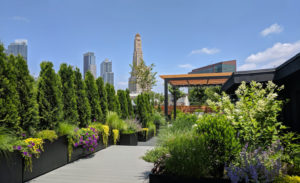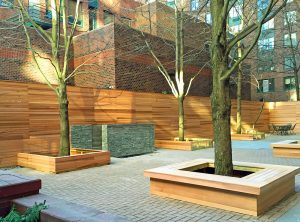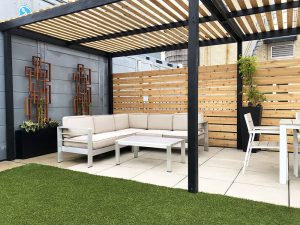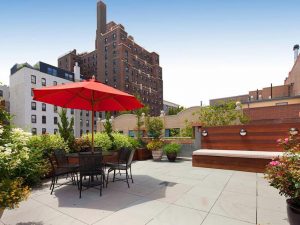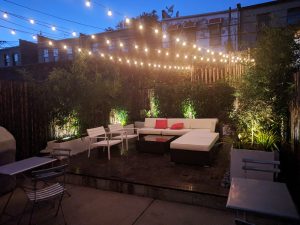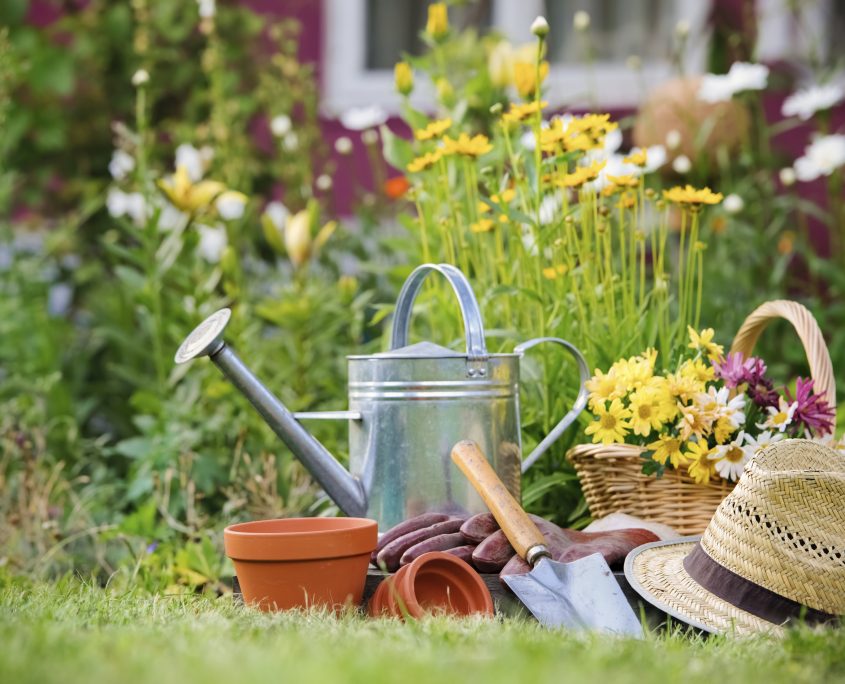
With gardening, timing is everything, so start as soon as you can to take advantage of the long growing season ahead. It’s also time to assess the damage from the winter. Spring has sprung, and your garden will show you which plants are ready to come back. Rose bushes and hydrangeas are already starting to put out new growth, and woodier herbs might be sprouting some new leaves. Some of your plants, though, might not have made it. We usually wait until after Mother’s Day to make a final call on which plants have survived, since there are some plants, like bamboo and rose-of-Sharon, that take a little longer to wake up from their long winter’s nap.
Perennials that are starting to outgrow their containers can be divided at this time, before they have begun their spring growth. By splitting the perennials, each plant has room for more growth, and you can get twice the bang for your buck (or you have a nice gift for a friend!). For the plants that are just starting to show new growth, now is the best time to prune because you can clearly see the whole plant. Before new growth and warm weather can increase the risk of disease, deadhead and prune your plants and root systems. After you’ve removed the plants that aren’t coming back this spring, you have now made room for new plants! Be sure to choose the right plant for the right place, and remember to think of the amount of sunlight the location gets per day before choosing the right plants for full sun, partial sun, or shade.
You also need to get your soil ready for the season ahead. It’s also likely that last year’s growth has depleted your soil’s nutrient content. The process of amending soil involves adding materials in order to augment or modify the soil’s physical characteristics. We recommend adding nutrition back into the soil by using an organic fertilizer according to the package directions. You can also pick fertilizers that are specifically made for flowering plants and vegetables as well. Mulching with a finely ground soil conditioner mulch will also help to improve the soil’s composition long-term.
Pro tip: Mix spent coffee grounds into your soil to deter slugs and other pests, as well as put a smile on acid-loving plants. Making compost also will really help the health of your garden and lessen your impact on the environment with your trash. I could write a whole article on composting alone, but, in short, compost is the superfood for plants. You can turn food scraps, leaves, and other otherwise useless “green waste” into nutrient-rich fertilizers and soil amendments for your plants. There are a few kinds of composting that work well for small spaces: small barrel composers that can be rotated easily, vermiculture (or composting with worms), or making a compost tea, where you simply blend old food scraps for instant compost. Composting helps revitalize your soil and helps you grow happy plants. After clearing the planting area and removing weeds, add a 4-inch layer of compost to new beds and work it well into the soil, along with any other nutrients. On top of this, add some mulch. If you mulch now, you’ll have little-to-no weeding come summer. Look at this article to help you choose a mulch (http://www.bhg.com/gardening/yard/mulch/the-best-mulches/) or ask your local gardening store. We also offer mulching visits to our garden clients.
Once you’ve separated perennials, pruned your plants, removed the dead ones, re-fertilized and turned your soil, the only thing left is watering. As the weather gets hotter and hotter, it’ll be less stress on you and your garden if you set up a self-watering system. I recommend installing a drip irrigation system. It takes a little work at the outset (buying a watering timer, setting up drip lines, all of which we discussed and gave resources for two weeks ago), but once you have it set up, you get to sit back and enjoy the fruits of your labor. We also offer installation of drip irrigation systems to our clients in NYC. An irrigation system is relatively inexpensive in comparison with the cost of having to replace plants that weren’t watered correctly during the growing season.
When planning for next year, you can start seeds indoors, giving you a leg up on the growing season and it’s cheaper than buying starter plants. All Things Plants (https://garden.org/apps/calendar/) is an awesome resource for timing out your year.
Sources:
The Bountiful Container by Rose Mcgee and Maggie Stuckey
http://lifehacker.com/top-10-ways-to-get-your-dream-garden-ready-this-year-1691415272
http://gardenmentors.com/garden-help/gardening-guidelines/how-to-prepare-containers-for-planting/
https://garden.org/apps/calendar/
http://www.bhg.com/gardening/yard/garden-care/spring-gardening-checklist/
http://www.bhg.com/gardening/yard/mulch/the-best-mulches/


